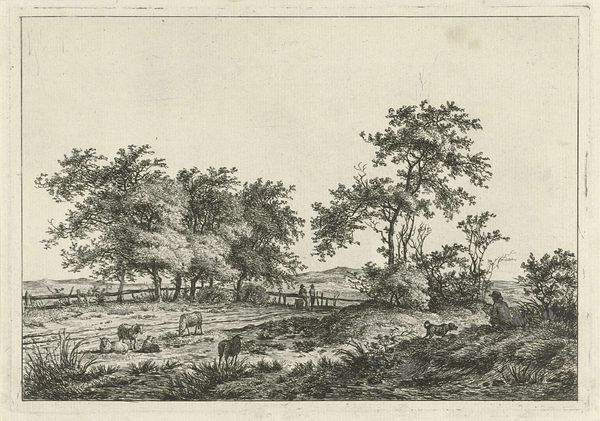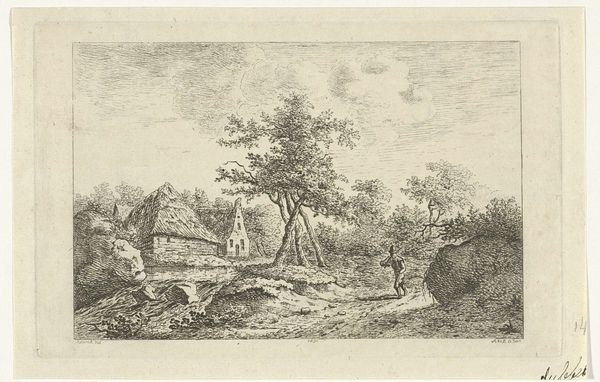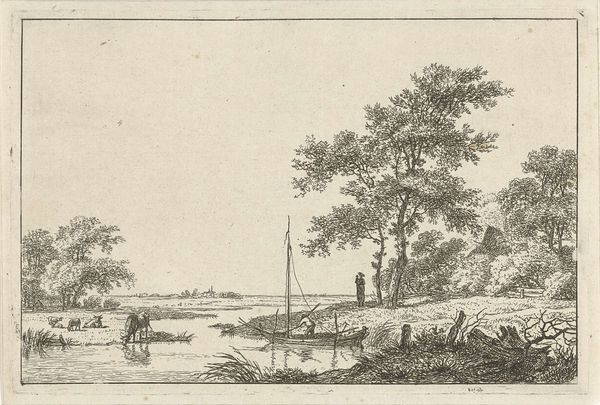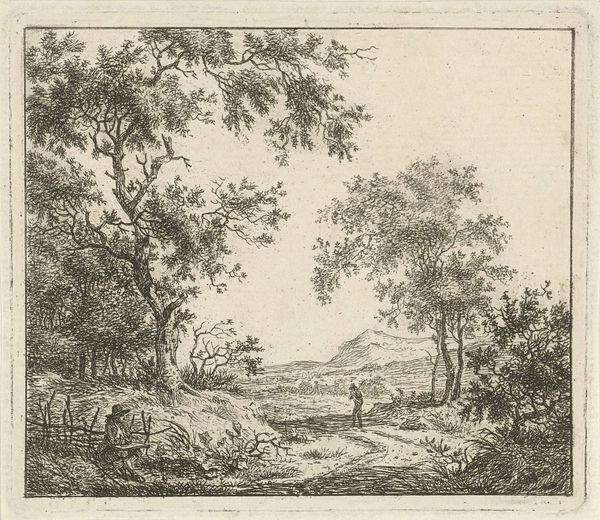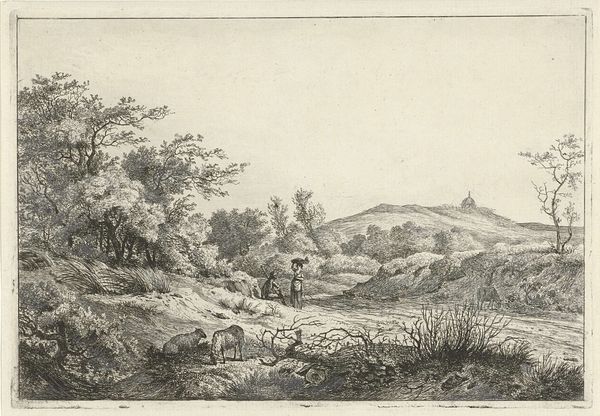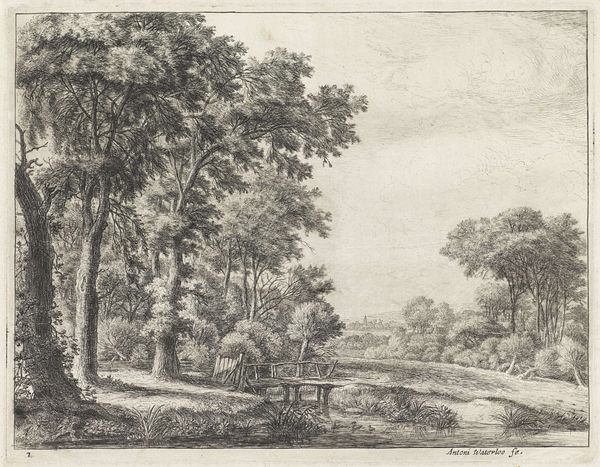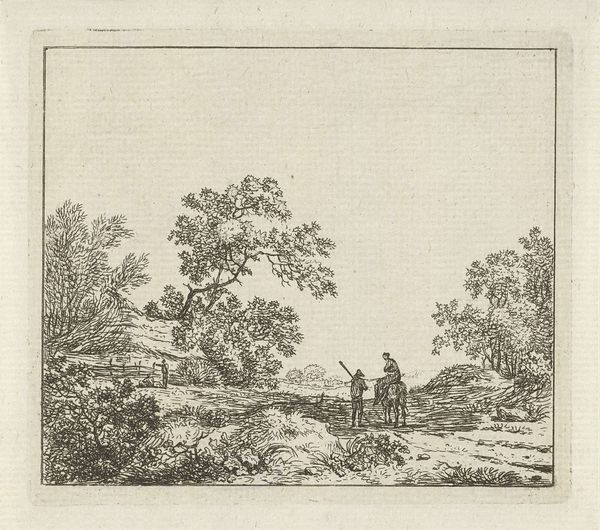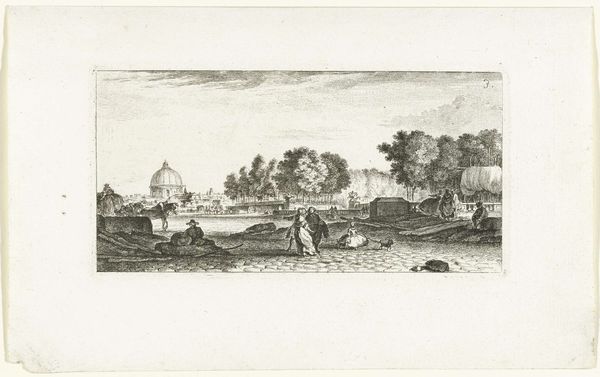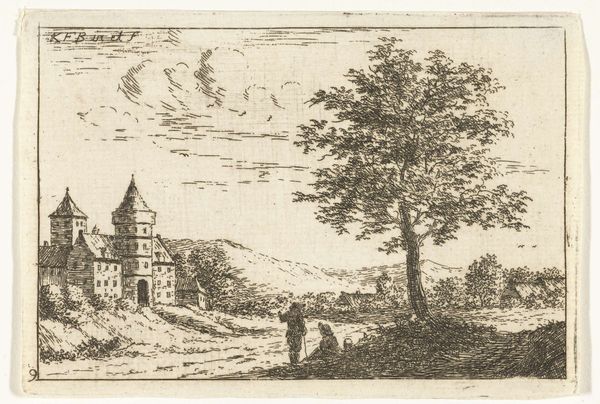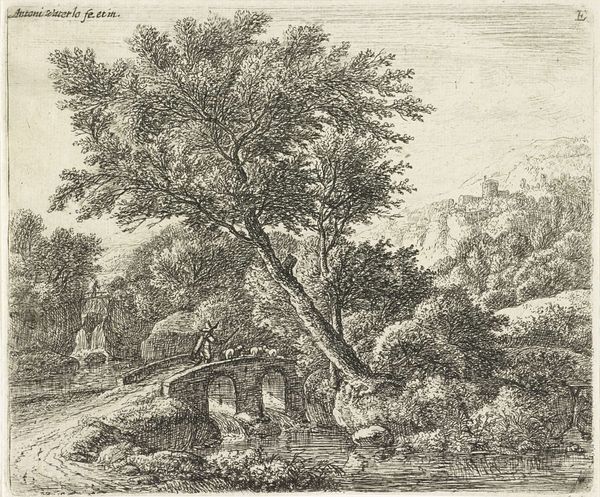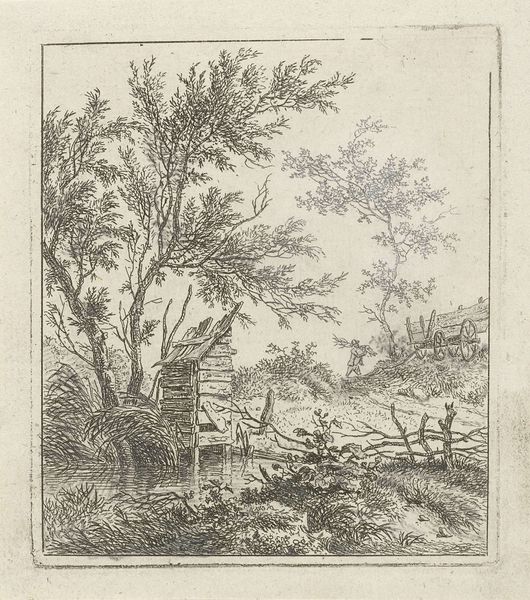
drawing, print, etching, engraving
#
drawing
# print
#
etching
#
landscape
#
form
#
romanticism
#
line
#
engraving
Dimensions: height 106 mm, width 127 mm
Copyright: Rijks Museum: Open Domain
This print, "Landschap met waterput" or "Landscape with Water Well" by Hermanus Fock, was made with etching, a printmaking technique that democratized image production in the 18th and 19th centuries. The scene is created by drawing with a sharp needle on a wax-coated metal plate, which is then bathed in acid. This process eats away the exposed lines, which are then inked and printed, leaving a raised impression on paper. The lines evoke the textures of foliage, earth, and the wooden structure of the well. The labor-intensive process mirrors the manual work depicted in the landscape, suggesting the rhythms of rural life. Fock’s etching embodies a shift towards accessible art, reflecting a wider movement of images and knowledge. The print exists as an artifact that emphasizes the importance of material, making, and context in understanding art, and challenges the idea of fine art as separate from craft.
Comments
No comments
Be the first to comment and join the conversation on the ultimate creative platform.

